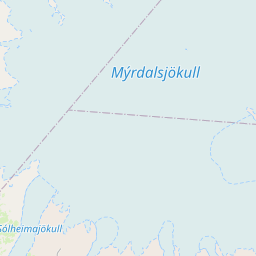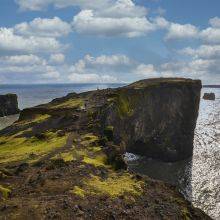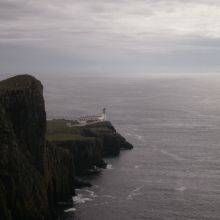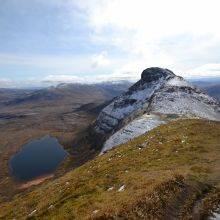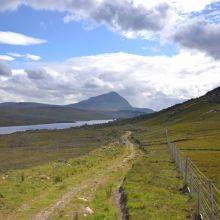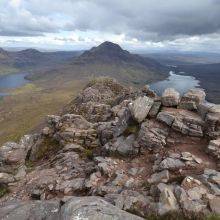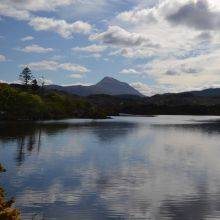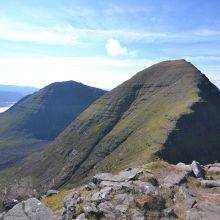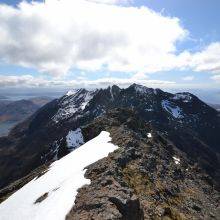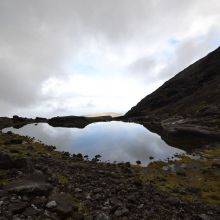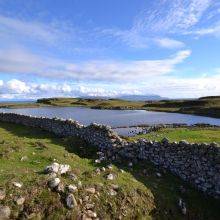When Is the Best Time
Are you looking for an outstanding day trip from Iceland, or do you wish to explore the south of this magnificent island? These two fantastic waterfalls can be easily explored in one day, located next to the Ring Road. Do you plan to visit Dyrholaey? You can combine these waterfalls and Dyrholaey ideally in one day. Google Maps direction
The majority of the people visit Iceland during the warmer season, from May to September, with long daylight hours – 24 hours in June. If you wish to see Northern Lights, sunrises and sunsets and to avoid the busy summer months, I highly recommend spring and autumn. However, there is no guarantee for the Northern Lights during these seasons.
What Is the Best Time to Visit Iceland?
If you wish for warmer temps and less rain, go from June to August in the summer. Having a chance to watch the Northern Lights and experience less rain go in spring in April or May or autumn in September and October. To escape the crowds, experience solitude, and watch the famous Northern Lights go in the winter from November to March.
Photographer Tip - When to Take the Best Pictures?
Due to the location in the southwest of Iceland, the later it gets, the better the light to capture the rainbows from the spray around the waterfalls on a sunny day.
Do You Want to See Puffins in Iceland?
Then visit Iceland from April to August. You can't have it all in one visit, but puffins are indeed a good reason for these months.
Best Daytime for Seljalandsfoss & Skógafoss and Avoiding Crowds
These waterfalls near the capital city Reykjavik are quickly reached next to the highway. They are quiet in the morning, the parking tends to fill up after 10 am, it is the busiest during the day, and these waterfalls are most beautiful and peaceful again at sunset or in the evening.
There isn't any sunset in the summer, the "polar day" when light remains for 24 hours. It is a natural phenomenon due to its proximity to the Arctic. The sun doesn't fully set, and it is not a totally bright light, but also not dark. I experienced it once for one week; I found it strange that I could still see everything from the accommodation room late at night.
Climate and Weather South Iceland
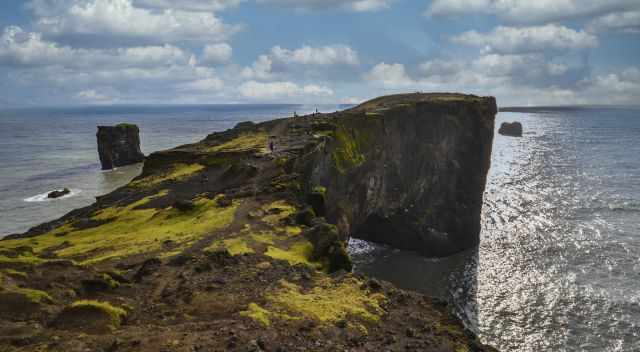
The climate in the south of Iceland is relatively mild due to the Gulf Stream transporting warmer air, and this area is the warmest in entire Iceland. The weather in Iceland changes quickly, and you may need rain gear and light clothes in one day.
- Travelling in April is a bet; it can still be cold and icy, but the first signs of spring can also occur.
- May becomes pleasant, which means temps around 10°C during the day.
- July and August are the warmest months reaching up to 20°C during the day and are the busiest, like elsewhere in Europe during the school holidays.
- September is still a great month, and crowds thin out - decreasing temps ranging from 17-10°C during the day.
- Like April, October is a bet regarding temps, rain, and snow.
- The winter from November to March is the most challenging time due to heavy rainfall, strong winds, snow and ice, road closures, and short daylight of 4-6 hours only. If you wish to visit in the winter, bring crampons for the icy and slippery paths. However, this area is the warmest, and temps are frequently above freezing.
Best Months to Visit
With thousands of waterfalls, Iceland is a magical island where residents believe in trolls. For a good reason, Iceland is one of the main locations in the "Game of Thrones", and Skogafoss was featured in the first episode of season 8. Visiting this country feels like being transported into a fairy tale.
For me, one of the most beautiful waterfalls coming out of a tale is Seljalandsfoss. It is just a distance of 30 km between Seljalandsfoss and Skogafoos, which takes less than half an hour to drive on the Ring Road along the Golden Circle. Coming from Reykjavik, you first reach Seljalandsfoss, a small cave is situated behind the fall. Walking behind and looking out is definitely an unforgettable highlight in Iceland.
3 Facts About Seljalandsfoss
- The Seljalandsfoss waterfall is 61 m high and 11 m wide.
- The waterfall is fed by pure melted glacial water from the well-known Eyjafjallajökull; massive eruptions significantly impacted air travel in 2010.
- It is one of the most famous falls, with roughly one million visitors annually because of its location at the Ring Road, and you can walk behind this awesome fall.
Parking Seljalandsfoss
It is a vast parking lot, and a fee is requested nowadays. There is a ticket machine - fee of 700 ISK = 5 €, facilities, a snack stall, and even a gift shop. Pay and display the ticket in your window. After visiting both waterfalls, warm up with a lamp soup.
Tip: A short trail leads from Seljalandsfoss to the Gljúfrabúi waterfall, situated in a small canyon hiding behind a rock wall. You need a rain jacket and probably waterproof shoes if you like to explore this adventurous waterfall just a few minutes away.
Continue your journey from Seljalandsfoss to Skogafoss, another breathtaking waterfall in Iceland.
5 Facts About Skogafoss
- This waterfall drops from the cliffs 63 m down and is 25 m wide. It is one of the most impressive because of the sheer drop and the high amount of water.
- The flow looks like a curtain, and the spray lets rainbows appear on a sunny day, but your clothes may soak in the water definitely; if you like to get closer, wear a waterproof jacket.
- These sheer cliffs were once the coastline of Iceland.
- The melting water of two glaciers feeds Skogafoss, Eyjafjallajokull, and Myrdalsjokull.
- The myth is that a Viking hid a golden chest below the waterfall. Do you wish to know more about this legend and Skogafoss? There is a museum in Skogar, just a short ride.
How to Visit and Explore Skogafoss?
One reason for its popularity is the proximity of 2 km from the Ring Road, and you can park your car close to the Skogafoss waterfall. Most visitors have a closer look at the bottom of the fall only, but there is more to see. To the right, the east side is a staircase leading up to the top of Skogafoss, offering breathtaking views from the viewing platform. It is pretty safe to climb up and down and is not slippery because of the metal grate construction. Do you wish to explore more of this beautiful area? Follow the river path to many more waterfalls without any crowds.
Parking Skogafoss
There is plenty of parking, usually big enough for the many day visitors by rental car, guided tours, and tour buses.
Packing Tip for Your Waterfall Visit
You need proper boots with good traction and rainproof gear. Without this gear, you will be soaked up in cold water. To enjoy these magnificent waterfalls, come prepared and get your best shots.
Camping and Hotel Skogafoss
Before you reach the parking for Skogafoss waterfall, you see the Skogafoss Hotel and the campground to the right. The hotel is definitely the better option. If you are travelling on a budget price per person per night, 1.500 ISK = 10,80 €. Someone will knock on your door to collect the fee. Restrooms and showers are available, but coins are needed for the shower. The so-called Skogar campsite is open throughout the year, but you need a little luck that the facilities were cleaned before your visit.
Some of these pictures are provided by my friend and photographer, Chris.
Do you want to obtain the usage right for these images? Contact me, but we will take action against picture theft.
Why do I write this here? Hundreds of my pictures are used worldwide without any credit, nor did they get my permission. I don’t mind giving permission, but I want to get asked for it and to be mentioned. The world wide web changed a lot, and rewriting honest travel content is the new business for many fake travel websites. Do you wish to know more about this topic and how to unmask such websites quickly? Read my article “The Truth About Fake Travel Websites and Picture Theft.”








